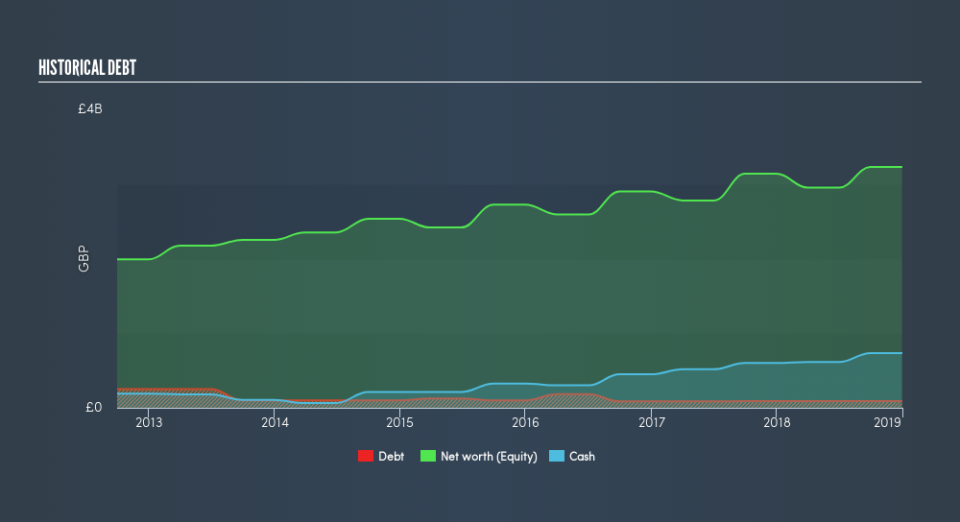Why Taylor Wimpey plc (LON:TW.) Is A Financially Healthy Company

Want to participate in a short research study? Help shape the future of investing tools and you could win a $250 gift card!
Small and large cap stocks are widely popular for a variety of reasons, however, mid-cap companies such as Taylor Wimpey plc (LON:TW.), with a market cap of UK£5.2b, often get neglected by retail investors. Surprisingly though, when accounted for risk, mid-caps have delivered better returns compared to the two other categories of stocks. Let’s take a look at TW.’s debt concentration and assess their financial liquidity to get an idea of their ability to fund strategic acquisitions and grow through cyclical pressures. Remember this is a very top-level look that focuses exclusively on financial health, so I recommend a deeper analysis into TW. here.
View our latest analysis for Taylor Wimpey
Does TW. Produce Much Cash Relative To Its Debt?
TW. has built up its total debt levels in the last twelve months, from UK£89m to UK£118m , which accounts for long term debt. With this rise in debt, the current cash and short-term investment levels stands at UK£734m to keep the business going. Additionally, TW. has generated cash from operations of UK£641m in the last twelve months, leading to an operating cash to total debt ratio of 546%, meaning that TW.’s debt is appropriately covered by operating cash.
Can TW. meet its short-term obligations with the cash in hand?
Looking at TW.’s UK£1.2b in current liabilities, it appears that the company has been able to meet these commitments with a current assets level of UK£5.1b, leading to a 4.22x current account ratio. The current ratio is the number you get when you divide current assets by current liabilities. Having said that, a ratio greater than 3x may be considered by some to be quite high, however this is not necessarily a negative for the company.
Does TW. face the risk of succumbing to its debt-load?
TW.’s level of debt is low relative to its total equity, at 2.8%. This range is considered safe as TW. is not taking on too much debt obligation, which may be constraining for future growth. We can test if TW.’s debt levels are sustainable by measuring interest payments against earnings of a company. Ideally, earnings before interest and tax (EBIT) should cover net interest by at least three times. For TW., the ratio of 312x suggests that interest is comfortably covered, which means that debtors may be willing to loan the company more money, giving TW. ample headroom to grow its debt facilities.
Next Steps:
TW. has demonstrated its ability to generate sufficient levels of cash flow, while its debt hovers at a safe level. In addition to this, the company exhibits proper management of current assets and upcoming liabilities. This is only a rough assessment of financial health, and I'm sure TW. has company-specific issues impacting its capital structure decisions. I suggest you continue to research Taylor Wimpey to get a better picture of the stock by looking at:
Future Outlook: What are well-informed industry analysts predicting for TW.’s future growth? Take a look at our free research report of analyst consensus for TW.’s outlook.
Valuation: What is TW. worth today? Is the stock undervalued, even when its growth outlook is factored into its intrinsic value? The intrinsic value infographic in our free research report helps visualize whether TW. is currently mispriced by the market.
Other High-Performing Stocks: Are there other stocks that provide better prospects with proven track records? Explore our free list of these great stocks here.
We aim to bring you long-term focused research analysis driven by fundamental data. Note that our analysis may not factor in the latest price-sensitive company announcements or qualitative material.
If you spot an error that warrants correction, please contact the editor at editorial-team@simplywallst.com. This article by Simply Wall St is general in nature. It does not constitute a recommendation to buy or sell any stock, and does not take account of your objectives, or your financial situation. Simply Wall St has no position in the stocks mentioned. Thank you for reading.

 Yahoo Finance
Yahoo Finance 
